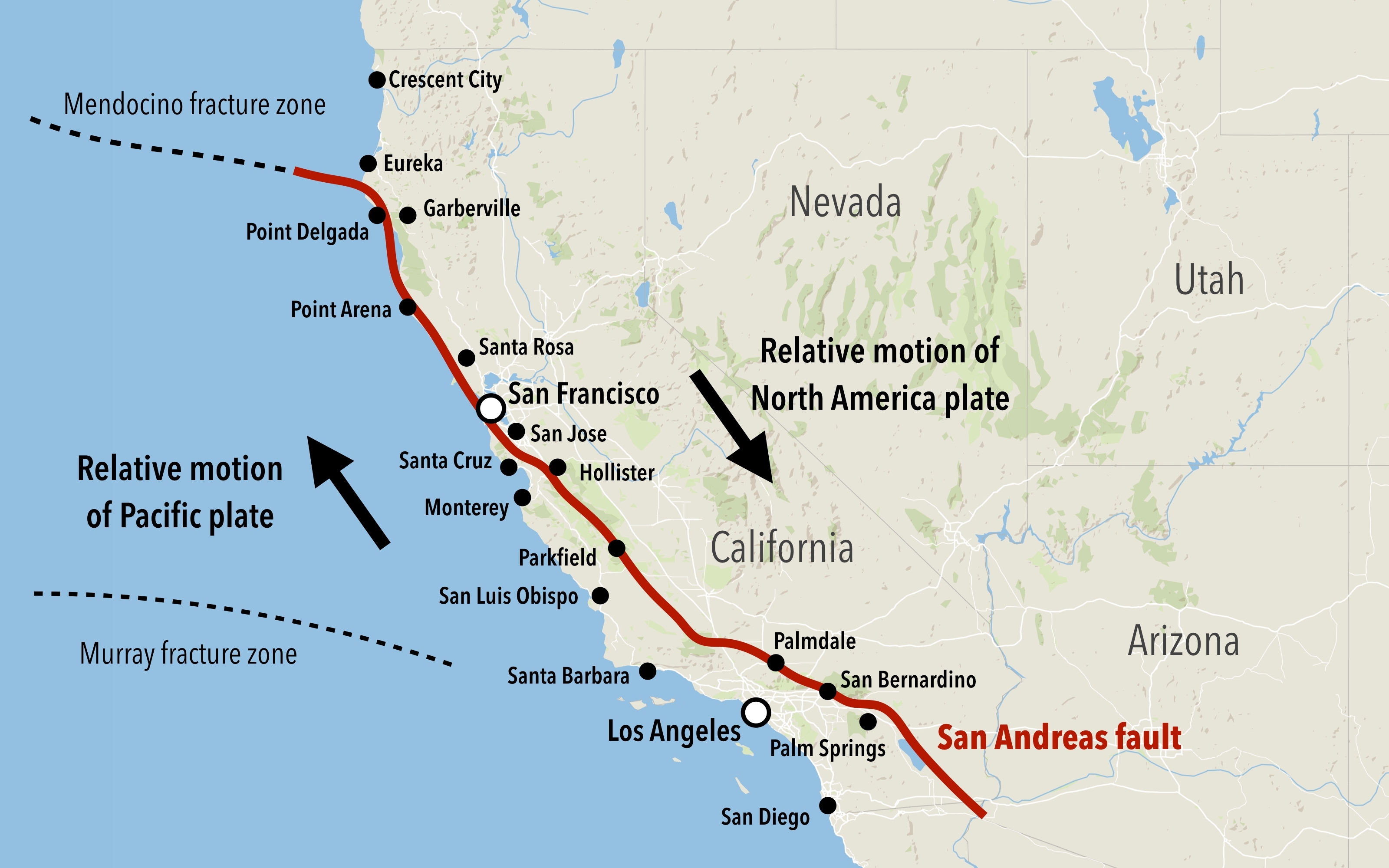The San Andreas Fault carves through the Californias at the point where the Pacific Plate stands toe-to-toe with the North American Plate. The boundaries between tectonic plates are often hotbeds of earthquake activity, and this 1,200-kilometer (750-mile) fault line is no different. However, the San Andreas Fault is especially worrying for geologists, not to mention the millions of people who live along its course.
A rupture in the San Andreas Fault was the cause of the 1906 San Francisco earthquake, which killed some 3,000 people and destroyed the vast majority of the city, leaving half the population homeless.
This was certainly not a one-off event. In 1857, a rupture of the San Andreas Fault in central and southern California triggered the Fort Tejon earthquake, which clocked in at around 7.9 magnitude. Just a few people were killed, but it’s often reported as one of the greatest earthquakes ever recorded in the US.
Earthquakes are tricky to predict with certainty. However, by studying historical records and computer modeling, geologists estimate that the San Andreas Fault likely causes significant earthquakes every couple of centuries. It’s not a matter of “if” another earthquake will strike the area, but “when.”
“Based on models taking into account the long-term rate of slip on the San Andreas fault and the amount of offset that occurred on the fault in 1906, the best guess is that 1906-type earthquakes occur at intervals of about 200 years. Because of the time needed to accumulate slip equal to a 20-foot [6-meter] offset, there is only a small chance (about 2 percent) that such an earthquake could occur in the next 30 years,” the United States Geological Survey (USGS) website reads.

The San Andreas fault runs close to a number of major cities in California.
Image credit: Dimitrios Karamitros/Shutterstock.com
Considering the number of people and the amount of infrastructure that resides in modern-day San Fransisco, this has the potential to prove devastating.
This hypothetical, yet almost inevitable, major earthquake has been dubbed the “Big One.” Based on the premise of a potential magnitude 7.8 earthquake striking the southern San Andreas Fault, it’s estimated it could lead to more than 1,800 deaths, displace millions, and cost $200 billion in damage.
In the meantime, there is another immediate threat looming over California. Running parallel to the San Andreas Fault along the east side of the San Francisco Bay, there is the Hayward Fault, which has also been associated with the 1906 San Francisco earthquake.
It might lack the reputation of the San Andreas Fault, but the Hayward Fault has the potential to be no less devastating. In 2008, the USGS described the Hayward Fault as a “tectonic time bomb, due anytime for another magnitude 6.8 to 7.0 earthquake.”
The good news is that authorities and hundreds of scientists are constantly keeping an eye on the San Andreas Fault. While it is considered to be one of the most closely studied faults on the planet, there are many unknowns still surrounding this giant geological feature.
It’s currently impossible to prevent an earthquake, but it is possible to prepare for the fallout of such an event. Each year since 2008, millions of people participated in the Southern San Andreas ShakeOut Scenario, an annual earthquake preparedness drill. Over 9.6 million people have registered for the 2023 drill, which is set to take place on October 19. The main message of the project? In the event of an earthquake, simply drop, cover, and hold on.
Source Link: Why We Need To Pay Attention To The San Andreas Fault